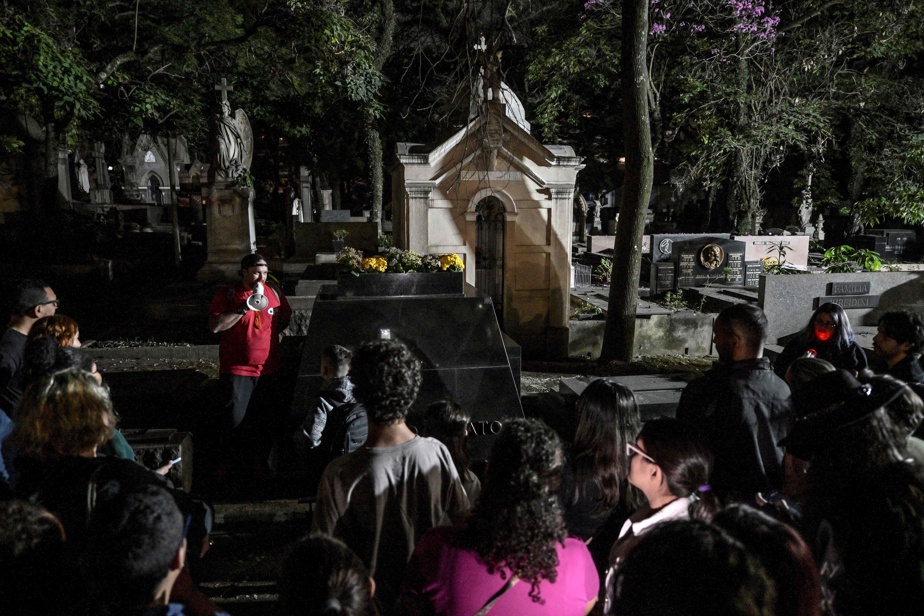(Sao Paulo) At night, by the glow of telephones, a procession passes between the tombs and travels through time. The frenzy of Sao Paulo, the largest megacity in Latin America, seems far away.
At the Consolation Cemetery, in the heart of the city, one Friday a month, a night visit is organized to follow in the footsteps of Brazilian history, to meet some of its famous characters.
There are about 130 visitors that evening who try the adventure. No entrance ticket: you just have to bring a kilo of food, which will be given to charitable organizations.
Megaphone in hand, Thiago de Souza provides explanations and short history lessons.

PHOTO NELSON ALMEIDA, AGENCE FRANCE-PRESSE
Thiago de Souza (right)
This lawyer had this idea in 2021, after the death of a loved one from COVID-19.
“It’s something therapeutic for me. I lost an aunt and I started consuming this type of content related to death, to ghosts. I decided to look for a mechanism to try to dialogue with this, to reconcile myself with this subject,” he explains to AFP.
Founded in 1858, the cemetery is the oldest in Sao Paulo, the economic capital that has always played a leading role in the political, industrial and cultural history of the Latin American giant.
The great characters follow one another.
Alongside former presidents Manoel Ferraz de Campos Salles (1841-1913) and Washington Luis (1869-1957), there are the tombs of the painter Tarsila do Amaral (1886-1973), one of the great figures of Brazilian modernism, and the writers Mario de Andrade (1893-1945) and Oswald de Andrade (1890-1954), two giants of Brazilian literature.
“Almost a museum”
Among the approximately 8,500 tombs, we also discover that of Luis Gama (1830-1882), a black lawyer and major figure in the fight for the abolition of slavery in Brazil.
“It’s almost a museum,” enthuses Valeria Fernanda, a 24-year-old stylist, who sees nothing chilling in this excursion under the moon among the dead.
On the contrary, for her, this visit “should be better known and popularized, there are many people who have taboos and fears of cemeteries”. From this “incredible experience”, she particularly remembers “the details of the tombs”: “I am impressed by the financial means that some of the people buried here had”.
One of the highlights of the walk is the impressive mausoleum, considered the largest in Latin America, of the Matarazzo family, a wealthy lineage of industrialists.

PHOTO NELSON ALMEIDA, AGENCE FRANCE-PRESSE
In the aisles, many works are signed by renowned Brazilian sculptors, such as Victor Brecheret and Luigi Brizzolara.
Alain de Amaral, a 19-year-old student, also enjoyed the experience. “I learned a lot of things I didn’t know,” he says.
And then, besides the great history and the monumental tombs, there is Spike. This dog had been abandoned in the cemetery and had ended up becoming the companion of the employees of the site and the grieving visitors.
When he died in 2022, the staff asked for special permission to bury him on site. He is the only animal to have had this honor.
